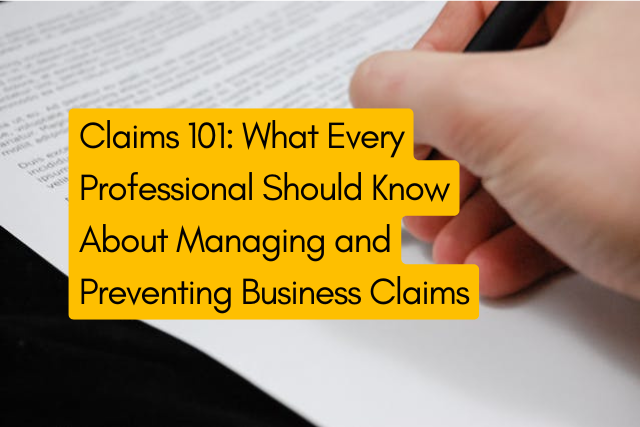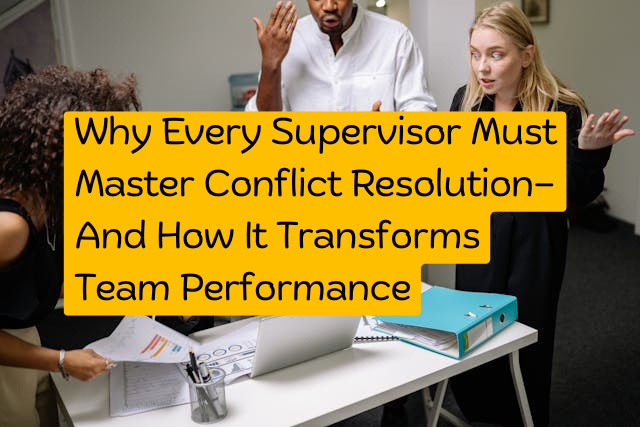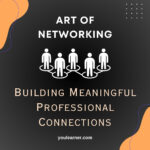Welcome to the World of Claims—Are You Prepared?
If your role now includes overseeing or processing claims, congratulations—you’re stepping into a critical function that protects the financial health of your organization.
Claims management isn’t just paperwork. It’s risk management in action. It’s your company’s frontline defense when things go wrong—and your opportunity to learn, improve, and prevent future losses.
In this guide, we’ll cover everything you need to know:
- How claims arise
- What processes are involved
- Key differences in claim types (workers’ comp, property, liability)
- How claims protect—and can threaten—company assets
- And how to become a proactive, prevention-focused claims leader
Let’s get you up to speed and empowered in your claims role.
⚠️ 1. What Is a Claim?
A claim is a formal request made to an insurer (or internal risk team) for coverage or compensation for a covered event, loss, or damage.
Claims typically arise from:
- Accidents or injuries (workers’ comp)
- Property damage (fire, flood, vandalism)
- Legal liability (customer injury, lawsuits, negligence)
A well-handled claim can ensure quick recovery. A poorly managed one can lead to legal battles, denied coverage, financial strain, or reputational harm.
🧱 2. The 3 Most Common Types of Business Claims
1. Workers’ Compensation Claims
Filed when an employee is injured or becomes ill due to work-related tasks. These cover:
- Medical expenses
- Lost wages
- Rehabilitation costs
✅ Required in nearly every U.S. state
2. Property Claims
Arise from damage to physical assets (buildings, equipment, inventory) caused by:
- Fire
- Weather events
- Theft or vandalism
- Water or electrical damage
Often filed under commercial property insurance.
3. Liability Claims
Third-party claims where your company is accused of causing:
- Bodily injury
- Property damage
- Financial harm (e.g., via negligence, faulty products, poor advice)
Examples:
- A customer slips in your lobby
- A product you sold injures someone
- A former employee sues for wrongful termination
These are typically handled under general liability, professional liability, or employment practices liability insurance (EPLI).
📑 3. Life Cycle of a Claim: From Incident to Closure
Understanding the process flow is essential to managing claims smoothly and compliantly.
🛠️ Step-by-Step Claim Lifecycle:
Step 1: Incident Occurs
- Someone gets injured
- Property gets damaged
- A lawsuit or complaint is filed
📌 Tip: Always document immediately, even if the issue seems minor.
Step 2: Initial Report Filed
- Internal report submitted (incident form, photos, witness statements)
- Claim is reported to the insurer or TPA (third-party administrator)
🕐 Timeliness matters—late reporting can delay resolution or reduce coverage.
Step 3: Investigation
- Claims adjuster is assigned
- Interviews, records review, site inspections
- Determination of coverage eligibility
📷 You may be asked to provide additional documents or assist in fact-finding.
Step 4: Reserve Setting
Insurer sets a financial reserve—their estimate of the claim’s total cost. This affects:
- Premiums
- Financial statements
- Future underwriting decisions
🔍 Large reserves or frequent reserves can increase your insurance costs.
Step 5: Claim Management & Resolution
- Medical treatment managed (for WC claims)
- Settlements negotiated (liability)
- Repairs/replacements approved (property)
- Claim either paid or denied
📞 Stay in close communication with adjusters, employees, legal, and leadership.
Step 6: Claim Closure
- Final payment is issued
- Files are archived
- Lessons are documented
- Claims data is reviewed for trends
📊 This is your chance to analyze what happened and prevent repeat incidents.
🧠 4. The Role You Play in Claims Management
Depending on your position, you may:
- Report and document incidents
- Monitor claim status
- Communicate with insurers or TPAs
- Work with HR, legal, and safety teams
- Negotiate settlements or corrective actions
The goal isn’t just to process claims—it’s to improve outcomes and reduce future risk.
🛡️ 5. How Claims Protect Your Organization
When handled correctly, claims:
- Ensure financial compensation for damage or loss
- Provide legal defense in liability cases
- Help injured employees recover and return to work
- Prevent small issues from turning into lawsuits
They’re a critical part of your risk mitigation strategy.
🚩 6. Common Pitfalls That Increase Claims Cost or Denials
- ❌ Late or missing documentation
- ❌ Failing to report within policy timelines
- ❌ Incomplete or inaccurate incident details
- ❌ Poor follow-up with adjusters
- ❌ Not correcting underlying safety or system failures
Avoiding these mistakes saves time, money, and relationships.
📉 7. Claim Trends You Should Watch
- Rising medical costs are driving workers’ comp claims higher
- Litigation frequency is increasing in employment and liability claims
- Weather-related property losses are spiking
- Cyber claims are becoming more common, requiring new policies
Staying informed on trends helps you advocate for better coverage and build internal awareness.
🔍 8. Data You Should Track for Claims Oversight
- Number of claims by type
- Average cost per claim
- Time from incident to reporting
- Time to closure
- Claim outcomes (denied, approved, settled)
- Lost workdays and return-to-work success
📊 Turn your claims data into insights that reduce future risks.
🔄 9. Proactive Strategies to Prevent Future Claims
✔️ 1. Safety Training & Culture
- Invest in leadership-led safety programs
- Conduct job hazard analyses
- Reward safe behaviors
✔️ 2. Policy & Process Review
- Clear reporting procedures
- Training on new equipment or processes
- Update outdated procedures annually
✔️ 3. Return-to-Work Programs
- Light-duty roles for injured employees
- Maintain productivity while minimizing lost-time claims
✔️ 4. Risk Assessments
- Partner with insurers for free loss control visits
- Evaluate top claim drivers quarterly
✔️ 5. Internal Claims Audits
- Are forms complete?
- Are reports timely?
- Are claims being tracked consistently?
🧭 10. Tools & Resources You Can Use
- Claim management systems (Origami, Riskonnect, Ventiv)
- Dashboards for tracking KPIs
- TPA portals for real-time claim visibility
- Insurance carrier training & loss prevention resources
✅ Conclusion: Claims Knowledge = Organizational Resilience
Claims management isn’t just an administrative task—it’s a strategic role that can:
- Save your company thousands (or millions)
- Improve employee trust and morale
- Enhance your risk profile and insurance terms
- Prevent repeat incidents through smart prevention strategies
Now that you understand the anatomy of a claim, how to oversee it, and how to prevent the next one, you’re not just reacting to incidents—you’re leading the charge on protection and performance.







